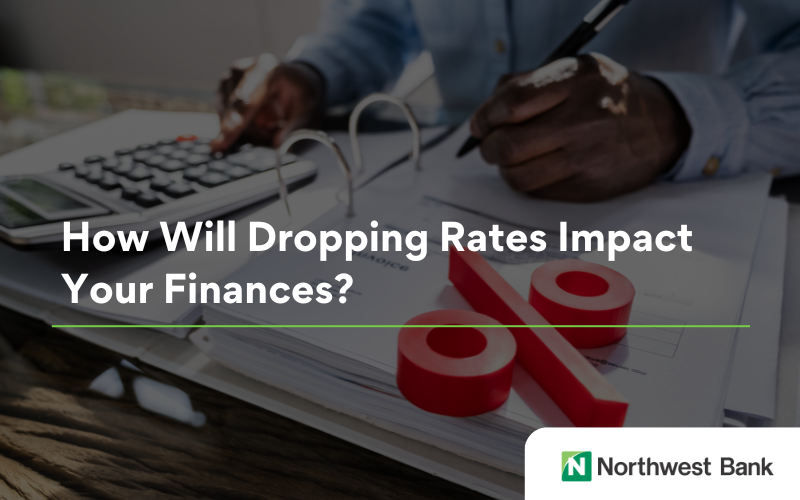Low or No Credit? Key Strategies to Boost Your Credit Score
Learn a few simple strategies for improving your credit score and achieving your financial goals.
Key takeaways:
- A higher credit score can open doors to more financial opportunities and help you achieve your goals.
- But if you have a low credit score — or no credit at all — it can be discouraging. The good news is that there are several simple strategies you can use to improve your score and build stronger credit.
- Here’s a guide on how to enhance your credit, covering everything from the factors that contribute to a strong credit score to helpful tips for boosting it.
A higher credit score makes it easier to borrow money at lower interest rates. Credit scores range from a low of 300 (considered very poor) to 850 (excellent). If you haven’t established any credit yet or have just gotten started, your credit score may be on the low end — and finding ways to achieve a higher score can be confusing.
It helps to understand how credit rating agencies measure creditworthiness. They use five factors to calculate your score — payment history, amounts owed, length of credit history, credit mix and new credit — and some carry more weight than others. Let’s explore each element and the strategies that can boost your score.
Payment history
Your payment history, accounting for 35% of your score, is crucial. It records your ability to make on-time payments. Late payments, typically reported when they’re 30 days past due, can significantly reduce your creditworthiness in the eyes of creditors, but there are practical ways to improve this aspect of your credit score.
To avoid late fees, you can set up automatic bill payments from your bank account. A monthly budget can also help you monitor debt payments more effectively. Paying more than the minimum when you have excess funds can also help, as it generates on-time payments and reduces your credit utilization percentage. Credit and budgeting tools can also help to improve your financial health, which includes instant access to your credit score and advice on how to reduce your debt.
If you've fallen behind on one or more accounts, contact the creditor to discuss payment options. Explain your situation and ask if they offer hardship programs or reduced payment plans. Keep in mind that many will provide consumer-friendly payment plans to return your delinquent account to good standing, so it doesn’t hurt to be honest and ask for help.
Finally, a secured credit card may help you to build your payment history. This kind of credit card requires a cash deposit from you that becomes your credit limit. Drawing down on the credit, which you periodically fund, generates a positive credit history.
Amounts owed
This category represents 30% of your credit score. It measures your credit utilization, which is the total amount of credit and loans you have used in relation to the amount available to you. For example, if you have $100,000 of credit and loans available and used $50,000, your credit utilization is 50%.
Here, debt management is the key. If you pay more than the minimum due and keep your credit utilization below 30%, your score usually will improve. To keep credit utilization low, do not close unused credit cards and use them occasionally to keep them active.
If you carry balances on credit cards, look for replacement cards with low introductory annual percentage rates (APRs), which you can use to transfer balances from your higher-rate cards. Remember that transferring a balance usually comes with a fee of 3% to 5% of the balance transferred. The introductory rate expires, often after 12 to 24 months, so remember to set a reminder for that date. If you anticipate carrying a balance when the promotional rate expires, start looking for a replacement credit card in advance.
Avoid using the maximum available credit on a single card whenever possible, as this will negatively impact your score. Instead, spread charges across more than one card.
Length of credit history
The length of time you’ve had credit also plays a role, making up 15% of your credit score. Your length of credit history includes the age of the oldest and newest accounts and the average age of all accounts.
Think of it as your credit journey — and longer journeys look better. Credit histories that stretch back years boost lender confidence. While keeping older accounts open can improve your credit utilization, it can also increase the average age of your credit accounts.
Just starting out? A student or secured credit card can help you establish and build a positive history. Another option is to become an authorized user on an account held by someone with superior credit.
Credit mix
Credit mix corresponds to 10% of your credit score and focuses on the types of credit accounts you have opened. It looks at how you use credit and your ability to manage different kinds of debt.
The types of credit you use matter. There are three primary types of credit: revolving, open-ended and installment. With revolving credit, you can use and pay back funds within a certain credit limit. The account remains open as long as it is paid on time and the amount used is below the credit limit. This type of credit includes credit cards and home equity lines of credit.
Open-ended credit is similar, but the cardholder must pay the account in full on the due date instead of carrying a balance. A department store charge card would qualify as open credit.
Installment credit requires a monthly payment that typically does not vary due to the application of a fixed interest rate. A portion of the loan payment applies to the principal, while the remainder goes to interest. Auto, mortgage and student loans all qualify as installment credit arrangements.
Maintaining a mixture of these types of credit shows effective debt management. However, avoid opening new accounts solely to improve your credit mix, as doing so can have the opposite effect by adding too many accounts, which can lower your score.
New credit
New credit accounts for 10% of your credit score and tracks the number and type of new accounts applied for or opened recently. It provides a window into your current credit usage and spending patterns.
Additional ways to boost your credit score
Now that we understand the basics of credit scores, here are some ways you can build or improve your score.
- Limit the number of accounts you apply for. These result in hard inquiries on your credit account, which can lower your score. When you apply for an account, you allow the creditor to query your credit. However, if multiple hard queries appear within the same 14 to 30 days, they typically count as one.
- Shop aggressively for rates on revolving, open and installment credit agreements. Pay close attention to the small print covering interest rates, late fees and prepayment penalties. Also conduct online research regarding the lender’s reputation.
- Access your credit report at least once a year. If you spot an error, file a dispute with the credit bureau and the company that reported the incorrect information.
- Seek help managing your debt. If you are in financial trouble, nonprofit credit counselors offer free advice and can help you develop a debt management plan. And don’t overlook your financial institution as a source of assistance — many offer hardship payment programs designed to help you take control of your finances.
Ready to build a stronger credit score? Our trusted professionals can provide expert guidance for the real-life challenges of managing credit. Whether you’re looking to improve your credit score or achieve other financial goals, Northwest’s dedicated team can help.




